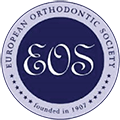
Heinz Winsauer, Austria
Curriculum vitae
Dr Winsauer obtained his degree in general medicine in 1980 at Innsbruck University, followed by four-year clinical training in general medicine and in intensive care. From 1985 he continued at the Dental University in Innsbruck and subsequently received his three-year orthodontic training. Since 1990 he has maintained a private practice in Bregenz, Austria. Dr Winsauer is a part-time instructor at the Department of Orthodontics University of Graz, Austria, and at the Universities of Bern and Geneva, Switzerland.
In 1998 he was the first Austrian orthodontist in private office to pass the European Board examination, since when he has been an active member of the European Orthodontic Society. Dr Winsauer is author or co-author of over 13 peer reviewed publications and of four orthodontic textbook chapters. He has given numerous international lectures and holds eight international orthodontic patents.
He has undertaken scientific research at the Dental University of Graz and the International University of Catalunya, Spain. His main research interests are: maxillary expansion in adults without surgical assistance (moment/force quantification), orthodontic treatment with bone-borne anchorage and mandibular midline distraction osteogenesis.
Lecture
Expanding the limits
A great smile is the most common desire expressed by most patients before orthodontic treatment. But the underlying anatomical structures do not always allow this. There are possibilities but also limits within the alveolar envelope for dental expansion. Beyond these limits relapse and periodontal damage might be expected. Widening the skeletal base leads to simplified and accelerated dental treatment with stable results and a pleasing appearance. Pure bone borne miniature expanders anchored on orthodontic mini-implants allow maxillary expansion without dental side effects or the need for surgical assistance even in mature adults. Widening the mandibular base by median distraction osteogenesis offers the same advantages. This appliance fulfills several crucial criteria for simplified clinical use. Hinges prevent the expansion of the temporomandibular joints and a double dental fixation guarantees a reliable tooth-borne fit. Besides stable results the reduced need to extract teeth and a healthy periodontal tissue after widening of the mandible and maxilla will help the orthodontist to fulfill their patients' expectations.



